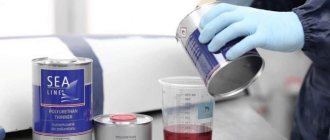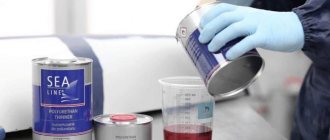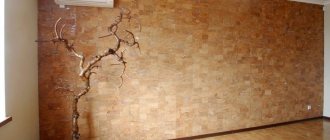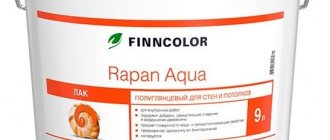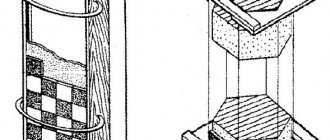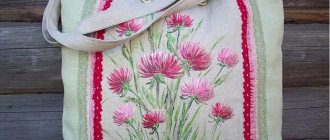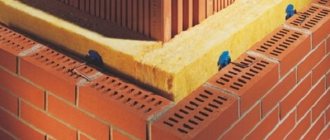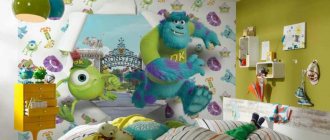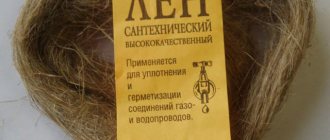Nowadays, unobtrusive luxury has come into fashion. It is not striking, but it certainly speaks about the status of the owners of the house. To achieve a similar effect, you don’t have to spend a lot of money on repairs; you can get by with the minimum. Even an imitation, if done well, will look stylish and elegant. The boom in natural materials began immediately after the crazy medley of the eighties. Two decades after such a shake-up of bad taste, which briefly became canon, it took the interiors of houses to begin to be decorated with a minimum of furniture and decorative elements, and stone, metal and wood returned to the finishing materials. True, plastic still periodically slips into the decoration of rooms. It’s already difficult to do without it; just remember modern PVC double-glazed windows, with which no wooden frames can compare in functionality. The basis of the finishing is natural materials, because eco-style holds its own. Wood on the walls has always looked rich and colorful, but the available species are not as durable, and the rare ones are significantly higher in value. In addition, pine and birch are already becoming a little boring, but the soul sometimes requires exotic things that are not so easy to get. If you want to see wood on your walls, then wallpaper with its imitation is what you need. Let's look at this material from different angles and identify all its advantages and disadvantages.
Purpose
Wood-effect wallpaper has firmly occupied its niche in the finishing materials market. They really reliably repeat the wood pattern, and can only reveal themselves if you look very closely. In this case, wallpaper means not only the paper or non-woven rolls that we are all so accustomed to. Modern materials such as cork, bamboo, veneer and compressed wood shavings also reliably replicate the texture of the original sample. They make a surface layer that guests and owners will admire. A more budget-friendly option is considered to be high-quality photo wallpapers that imitate wood only with a pattern. The higher the quality of the material, the more difficult it is to visually distinguish it from the original. The product range is rich, which allows you to choose an imitation of almost any type of wood: from budget pine to fabulously expensive ebony. Although in expensive interiors with pretensions to luxury, natural shades of brown prevail.
Among analogues, such wallpapers are superior to plastic imitating wood in terms of environmental friendliness, and confidently outperform ordinary lining in terms of cheapness. In addition, wood finishing can be used in a private house, but it is quite problematic to implement such a project in an apartment. Especially small “boxes” in Khrushchev-era buildings cannot boast of an abundance of free space. The finishing will “eat up” the extra centimeters.
Colors
Do not think that the choice of wooden wallpaper is limited to the brown shades standard for this natural material. Today you can find more original paintings in stores.
For example, beautiful white wood wallpaper will certainly refresh the interior and make it more delicate. Especially often, a similar color of this finishing material is used in the design of such a popular style as Provence or shabby chic.
To prevent the ensemble from looking too “cold” and tasteless, you need to bring appropriate interior items and furniture. They can have contrasting or pastel colors that stand out against a snow-white background.
Canvases that imitate mahogany look elegant and expensive. These options can be used to create rich and luxurious ensembles.
But it is not recommended to place too dark furniture against the background of such wallpaper, otherwise the ensemble will turn out to be too “brooding” and gloomy.
Pink wood-look wallpaper looks soft and gentle. Such light materials will not only refresh the interior, but also make it more calm and cozy.
Often such coverings are used to decorate bedrooms or children's rooms, as they calm the nervous system and look simply attractive.
It is recommended to place furniture in light and pastel colors against a background of wooden wallpaper with a purple tint. Of course, you need to rely on the shade of the paintings. If they are still light and delicate, you can move on to more solid interior items in dense and dark tones.
Features of use in the interior
Before you go shopping for finishing materials, you need to decide on the required characteristics. They directly depend on the room in which they will be used. If we are talking about a bedroom or a nursery, then it is better to give preference to wallpaper based on natural, recycled wood. Cork sheets or the simplest paper version are also suitable. True, the latter should not be glued in a nursery, since the material has a short service life, but can be easily replaced with another (in case of walls painted with markers). For the kitchen or hallway, choose durable wallpaper that has increased resistance to mechanical damage and can withstand conditions of high humidity and temperature changes. Here preference is given to materials made from wood waste with a special laminated coating.
Styles
Beautiful and fashionable wallpaper that imitates natural wood looks organically in both modern and antique ensembles. For interiors in a historical style or in the popular “vintage” style, coatings with the following characteristics are ideal:
- images of chests neatly placed on top of each other in a certain order;
- an image of natural tree bark that has natural imperfections;
- the look of aged shabby boards.
If we are talking about ensembles in a modern style, then it is better to turn to spectacular wallpaper, consisting of fragments of wood, decorated with a variety of prints and ornaments.
Today, good old stylized photo wallpapers imitating natural wood are very popular.
With the help of these unique finishing materials you can highlight interiors in the style of hi-tech, modern, loft or minimalism. In such groups it is recommended to have fresh flowers and plants in combination with wall decoration.
As for the well-known rustic country style, you can use canvases that imitate poorly processed wood with all its flaws and knots.
Externally, such canvases may look rough, but a country-style interior looks especially organic with such finishing.
Wallpaper imitating wood will be an excellent solution for an interior in an attractive eco-style. His name speaks for itself. For such ensembles, you can choose canvases with both smooth and natural textures with light relief. It is recommended to enhance this decoration with fresh flowers and plants to emphasize the environmental orientation of the interior.
Wooden wallpaper looks great in the style of French Provence. This trend assumes the presence of natural materials, different pastel or light shades in the interior. So, for a Provencal ensemble, the ideal solution would be pink, white or beige wallpaper.
For a classic style, it is recommended to choose a darker floor finish and a lighter shade of the walls. It will not be difficult to choose suitable furniture for such a color tandem.
Kinds
Conventionally, all wallpapers that imitate wood can be divided into two groups:
- On a thin base, most often paper or non-woven fabric;
- Two-layer, the “front” side of which is made of dense materials.
The latter, in turn, classify several more types:
- Veneer;
- Cork;
- Panels, tiles and planks from natural wood waste;
- Bamboo.
Each type has a number of advantages and disadvantages.
Wallpaper with imitation wood
Wallpaper with wood imitation is often used to decorate one wall in a room. An emphasis is placed on this surface, which is complemented by other eco-style elements. A room completely covered with this budget option looks harmonious only in cases where the texture of the wallpaper changes and alternates. The “solid” option is suitable for the background design of dachas or country houses, which imitate absolute environmental friendliness and remain close to a casual, rustic style. Wallpaper with a wood pattern is made from paper or non-woven fabric, as well as from multilayer modern materials. They can be:
- Acrylic;
- Vinyl;
- Fiberglass;
- Textile.
To increase durability, the surface is laminated, and such wallpaper is used in rooms with a special microclimate. Textiles repeat not only the pattern, but also partially the relief of wood, but the material is capricious and will require special care. Separately, it is worth noting the photo wallpaper. They can imitate not only the texture of the material, but also depict tightly fitted planks, slats, saw cuts or various pieces of wood with traces of nails and paint. The latest aged option is suitable for rooms in vintage and rustic styles.
Wallpaper with veneer
Veneer is translated from German as “chips.” The wood is processed on a special machine, which cuts it into thin sheets 1-3 mm thick. According to production technology, the material is classified into three types:
- Peeled;
- Sawn;
- Planed.
Veneer sheets are often used to decorate the surface of furniture and floor coverings. Based on their appearance, they are also divided into three types:
| Natural | The most environmentally friendly type. Its colors are limited to shades of brown. |
| Fan line | This veneer undergoes double processing. Peeled softwood sheets are pressed into blocks, which are then cut back into sheets. Using this technology, the finished material has a complex pattern. |
| Colored veneer | It is obtained by dyeing natural materials. |
Wallpaper consists of two layers: the bottom is paper or non-woven, and the top is a veneer sheet. The finishing material is usually made from valuable wood species:
- Beech;
- Oak;
- Wenge;
- Zebrano.
Wallpaper has high sound and heat insulation properties. They allow moisture to pass through, which allows them to be used in combination with artificial materials, thereby reducing the level of negative impact of the latter.
Cork finishing materials
Cork is a part of tree bark that ranks second in lightness among solids. The material got its name from the tree of the same name, in which this layer is the thickest and grows quickly. The bark is cut from the cork oak without harming the tree, and after a certain period it is restored. Wallpapers come in two types:
- Rolled;
- Leafy.
For both types, the bark is carefully ground into shavings, which are then pressed. For sheet wallpaper, the resulting mass is sanded from the front side and coated with a special varnish. Often this material is made in a single layer. In the rolled version, crushed cork is applied in a thin layer to a paper base, and sometimes coated with wax on top. The material turns out to be a beautiful sandy shade with dark inclusions. Separately, you can order wallpaper with a complex pattern, original colors, or even with an abstract picture that is made up of wood texture. Cork has high elasticity, which does not affect its strength in any way.
The paper base of roll wallpaper can be made of self-adhesive paper. This material is suitable for smooth walls without defects.
Bamboo wallpaper
Bamboo is one of the fastest growing plants on the planet. The stems look impressive especially in an interior with oriental motifs. Bamboo is actively used not only for decoration, but also as decoration. Live plants or “trees of happiness” are even placed in bathrooms, as they love high humidity. Bamboo wallpaper is classified into two types:
- From the inner layers of plant stems;
- From the outer part.
The first stages of processing are the same for both types. First, the stems are dried and then kept in a room with a special temperature and humidity level. After this, the wood (although it is not entirely correct to call it that in relation to the plant) is cut into thin strips, which are glued onto a fabric base. Wallpaper from the outer layers, as a rule, has a more colorful pattern. They are stronger than the second type and more resistant to ultraviolet radiation, since this part of the plant is adapted to constant struggle with environmental conditions. Wallpaper made from the inner part of bamboo is smoother, because it must be sanded. The color of this material is monochromatic, closer to dark shades of brown. Such wallpaper is coated with special substances that prevent fading.
You shouldn’t get carried away with bamboo in the interior. Due to the characteristic structure, a large amount of material in a room can cause “ripples in the eyes.” For this reason, it is recommended to decorate either only one wall or part of it with wallpaper. Disadvantages include sensitivity to temperature; the material can become warped and simply fall off the fabric base. But with bamboo wallpaper, provided that a special coating is used, you can decorate a wall not only inside the house, but also outside. Wood is environmentally friendly and has a bactericidal effect: it prevents the proliferation of harmful microorganisms. Unfortunately, the joints of the canvases after gluing will be visible to the naked eye and this aesthetic defect cannot be corrected. Bamboo will last a long time, is resistant to mechanical damage and is easy to clean.
Slabs made of sawdust and shavings coated with solid wood
Slabs made from sawdust and shavings are a material that is produced from industrial waste, but at the same time it has all the advantages of wood and is free of its disadvantages. The products contain resins and mineral binders that are absolutely safe for humans. The special treatment to which the slabs are subjected allows you to forget about rotting and cracking. Material without a solid wood finish is widely used for rough finishing. A special top layer, which provides a beautiful aesthetic appearance, makes the slabs more noble. It is made from paper with a characteristic pattern, which is covered with a protective film. Even rooms decorated in elite loft and modern styles do not disdain such finishing. In more expensive versions, the slabs are coated on top of the film with a special composition that imitates the relief. Also, the material is necessarily impregnated with antiseptics and solutions that make it impervious to moisture and fire. For this reason, the coating is used to decorate walls in the kitchen and bathroom. Among the disadvantages, low vapor permeability is noted. The walls will not breathe and the room will have to be ventilated periodically. Such “wallpaper” is made in different formats, from small tiles to large sheets, which can be used to “in one fell swoop” decorate the walls of a spacious room.
A paper-based pattern can replicate not only the texture of wood, but also stone, brick and other natural materials.
Advantages and disadvantages
Wood-look wallpaper in the interior has a number of advantages that significantly outweigh the few disadvantages. They are created, as a rule, trying to “fit” the imitation as closely as possible to the original, not only externally. Wallpaper production technology allows the use of exclusively natural additional components, binders and coating solutions. Bamboo wallpaper, for example, is glued to the wall only using organic glue. Cork, veneer, sawdust and shavings have good thermal insulation. They were specially modified for increased immunity to mechanical damage and wear. With natural wood, you will have to constantly worry about rotting, cracks on the dried surface, deformation and the appearance of parasites that will insidiously eat up and destroy the material from the inside. Here you can forget about all these troubles. The rooms will have good sound insulation, which will drown out neighbors and street sounds. Sawdust and shavings are impregnated with special solutions that are harmless to people, but increase the strength and characteristics of the materials. The main disadvantage of such wallpaper can only be poor vapor permeability. This does not apply to bamboo, but is typical for other materials, so the rooms will have to be constantly ventilated to remove stagnant air. Some also include the price as a disadvantage. For imitation materials of the highest quality using natural raw materials, the cost is of course high, but it still outperforms original wood. And finally, with such wallpaper it is easy to make repairs with your own hands; the technology for fixing them on the wall does not require any special skills from you.
Texture
The texture of wood-effect wallpaper can completely repeat the original pattern or create entire complex abstract paintings from numerous dashes and lines. There are many variations: from ornate patterns of juniper wood to spotted yew. In the author's collections, complex designs of rare breeds are reproduced: wenge, aningeria, bubingo, racego, laurel. Although such wallpaper can imitate not only ordinary wood. Their texture repeats the ship's skin, saw cuts of trunks with annual rings, boards of different sizes, adjusted to each other. The color range is not limited to shades of brown, although adherents of eco-style have to choose only from natural tones. The gradation of the most popular options is as follows:
- Light gold;
- Mahogany color;
- Sepia;
- Black ebony color mixed with gray tones;
- White birch shade with yellowness;
- Sandstone color;
- Honey shade;
- Oak dark brown;
- Caramel;
- Exotic purple color of amaranth.
Wood-effect wallpaper provides a unique opportunity to decorate a home with an imitation of expensive and rare wood species without significant costs. Although no one has canceled experiments, and some lovers of bold design solutions decorate the walls with extreme shades: green, pink, blue, light blue.
In the interior of the rooms
In the bedroom, a “piece of forest” is placed on the wall against which the head of the bed rests. As a rule, it is this side that is highlighted with color, light and decor. Wallpaper is also pasted in two stripes, which are combined with other materials in calm shades. The tree here will add additional comfort, and it will be easy and pleasant for the owners to fall asleep. You shouldn’t skimp on wallpaper for your bedroom or children’s room. These are the very premises where a person is most vulnerable to various kinds of toxins and harmful substances that can emit low-quality materials. In the nursery, one corner is also enough, which is convenient to designate the work area. The design of a spacious living room with a fireplace cannot do without a piece of naturalness. The tree is especially suitable for a guest from the north - Scandinavian style and for simulating a Russian village house with a national flavor. It is convenient to use such wallpaper to zone the area into sections in combined rooms. In small rooms, the space can be expanded by using a gray wood pattern of boards placed horizontally. They will seem to stretch out the room and visually make it wider; they do the same with ceilings that are too low, which are corrected by decorating walls that tend to rise upward.
The microclimate in the bathroom and kitchen is very similar. In both of these rooms, quiet periods alternate with “stress” for the interior: temperature changes, increase and decrease in humidity. Wallpaper for the kitchen and bathroom must be selected specifically. Their coating must be extremely durable and withstand the above loads without harm to the material or additional wear. The sight of a hallway covered with wood wallpaper will immediately tell guests from the threshold that nature lovers with good taste live in the house. For this room, light shades of brown are usually chosen, because the size of the hallway leaves much to be desired, and almost no natural light gets here. These colors will create a feeling of additional space, and the walls will seem to begin to breathe. Wood-effect wallpaper will not be lost in modern, Provence and fusion. In the best traditions of modern design, they decorate only one side. In general, in any room, “solid” finishing should be avoided, otherwise there will be an excess of it in the room. This rule can be neglected only in rooms where the walls really act as an inconspicuous background, which is mostly covered by interior items. In other cases, try to combine, if not materials, then at least their colors and textures.
Wallpaper or photo wallpaper
Today on sale you can find both wallpaper produced in the form of rolls and photo wallpaper that can be used to completely decorate an entire wall. You need to use them in the interior carefully, paying attention to the color, size of the pattern, and texture. Decoration must be done according to certain rules. It won't be as difficult as it might seem at first glance. So, in a large space such as a hallway, nursery or dining room, you can use murals.
Wood along the entire wall will add zest to the room and create a special atmosphere. This can be done by choosing the right image or creating your own background.
In the interior of the apartment you can also use ordinary wallpaper with images of trees, made in the form of rolls. Usually they are chosen if we are talking about a small apartment, where it is impossible to allocate a separate wall behind a large and voluminous pattern that visually absorbs the space. Of course, such materials are less interesting, and it will not be possible to achieve the visual effect of the presence of real wood. Conversely, a three-dimensional image on a photographic background can create a kind of illusion of presence. This is especially true for 3D samples.
It is not easy to glue them yourself, due to their large size and the need to carefully work out each corner to avoid the formation of air bubbles and possible distortions in the design.
Depending on the design of the room, finishing can be done in any way. For example, a three-dimensional canvas covering a wall can have a pattern in the form of a single tree or an entire alley. Wallpaper with trees stretching into the distance visually adds free space. Delicate shades of light green, olive, yellow and orange will help add light, warmth and comfort to the room.
Please note that the decorated canvas can depict an autumn, spring, winter or summer landscape. Photo wallpaper is an excellent solution for a living room where you are used to gathering with the whole family. However, such wallpaper also looks good in a children's or playroom.

